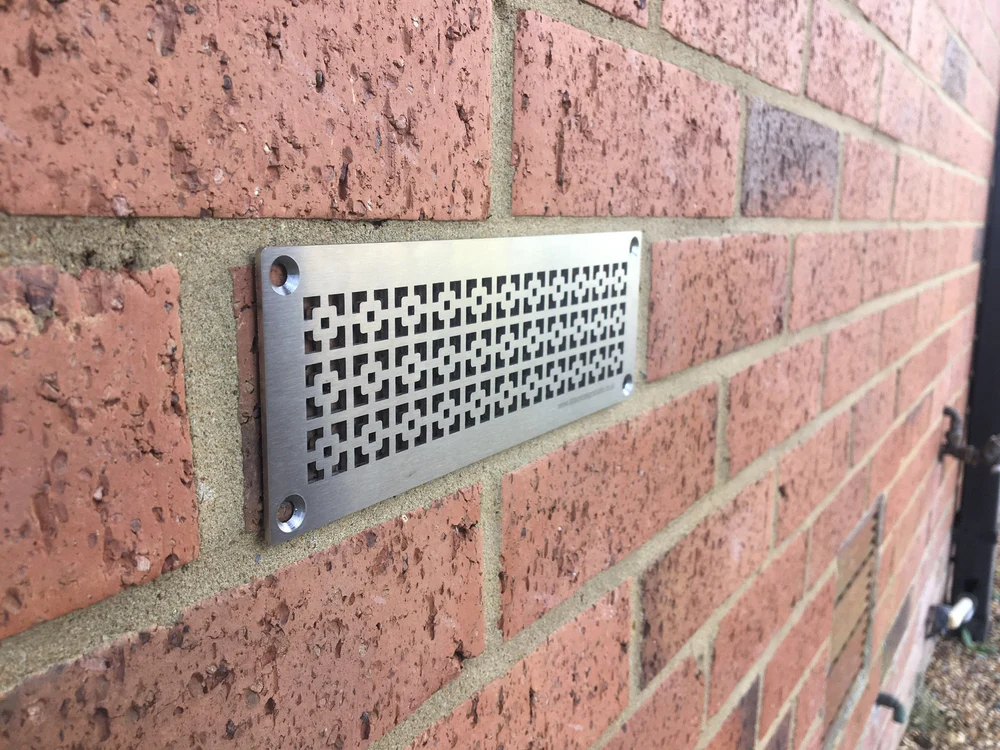
Maintaining proper ventilation in a home is crucial for preventing damp, mold, and structural damage. One often overlooked component in this system is the air brick mesh. Air bricks are small openings in walls designed to allow airflow, and fitting them with a mesh helps keep out pests, debris, and insects while maintaining effective ventilation. This article explores what air brick mesh is, its benefits, installation methods, materials, and maintenance tips to ensure your home remains safe, dry, and well-ventilated.
What Is Air Brick Mesh?
Air brick mesh is a protective barrier, typically made from metal, plastic, or other durable materials, that is fitted over or inside an air brick. The mesh prevents unwanted elements, such as rodents, birds, and insects, from entering the cavity behind the brick while allowing air to pass freely.
Air bricks are usually installed at the base of walls or around suspended floors to promote airflow and prevent dampness. Adding a mesh enhances the functionality of the brick by offering additional protection without compromising ventilation.
Importance of Air Brick Mesh
Installing an air brick mesh is more than just a preventive measure; it plays a significant role in the health of your home:
1. Prevents Pest Intrusion
Pests such as mice, rats, and insects can enter homes through unprotected air bricks. A fitted mesh acts as a barrier, keeping these unwanted visitors out while still allowing airflow.
2. Reduces Debris Blockage
Leaves, dust, and other debris can accumulate in air bricks, reducing airflow and potentially causing damp issues. Air brick mesh prevents debris from entering, ensuring continuous ventilation.
3. Maintains Structural Health
Proper ventilation prevents moisture buildup within walls and floors, which can lead to rot, mold, and structural weakening. By protecting air bricks with a mesh, you safeguard your home’s foundation and internal structure.
4. Enhances Energy Efficiency
Ventilation helps regulate temperature and moisture levels, indirectly supporting your home’s energy efficiency. An air brick mesh ensures the air pathway remains unblocked, contributing to optimal heating and insulation performance.
Materials Used for Air Brick Mesh
Air brick meshes come in a variety of materials, each with distinct benefits:
1. Metal Mesh
- Durability: Metal meshes, often made from stainless steel or galvanized steel, are highly resistant to damage from pests and weather.
- Longevity: These meshes can last decades without needing replacement.
- Security: Provides maximum protection against rodents and larger pests.
2. Plastic Mesh
- Lightweight: Easier to handle and install compared to metal options.
- Cost-Effective: Usually cheaper than metal alternatives.
- Corrosion-Resistant: Unlike some metals, plastic won’t rust or degrade over time.
3. Wire Mesh
- Versatile: Wire mesh can be cut and shaped to fit any air brick size.
- Durable: Offers strong protection against pests while allowing airflow.
- Customizable: Can be painted or coated for aesthetic purposes.
Choosing the right material depends on your budget, the level of protection needed, and environmental factors like exposure to moisture or extreme weather.
How to Install Air Brick Mesh
Installing air brick mesh can be a straightforward DIY task or a professional job, depending on your comfort level. Here’s a step-by-step guide:
1. Measure the Air Brick
Start by measuring the height and width of the air brick to ensure a snug fit. A mesh that is too small will not provide adequate protection, while one that is too large may interfere with the brick’s ventilation function.
2. Choose Your Mesh Material
Decide whether you want metal, plastic, or wire mesh based on your specific needs and local environment. Metal meshes are ideal for homes with high pest activity.
3. Cut the Mesh
Using appropriate tools (wire cutters for metal, scissors for plastic), cut the mesh to match the air brick’s dimensions.
4. Secure the Mesh
Attach the mesh over the air brick using screws, adhesive, or clips, ensuring it is firmly in place but does not block airflow.
5. Inspect and Adjust
Check that the mesh is properly aligned and covers the entire brick. Ensure there are no gaps where pests could enter.
Maintenance Tips for Air Brick Mesh
Even the most durable air brick mesh requires regular maintenance to remain effective:
1. Regular Cleaning
Remove dust, leaves, and other debris from the mesh periodically to prevent airflow obstruction. A brush or vacuum can be used for easy cleaning.
2. Inspect for Damage
Check the mesh for signs of rust, corrosion, or chewing by rodents. Damaged mesh should be replaced promptly to maintain protection.
3. Seasonal Checks
Air bricks may be more vulnerable during heavy rainfall or winter months. Inspect your air brick mesh before and after these seasons to ensure optimal functionality.
4. Professional Inspection
Consider having a professional check your ventilation system and air brick mesh periodically, especially if your home is older or prone to damp issues.
Common Problems Without Air Brick Mesh
Failing to install air brick mesh can lead to several issues:
- Pest Infestation: Rodents, birds, and insects can invade walls, floors, and loft spaces.
- Blocked Ventilation: Leaves and debris can reduce airflow, leading to damp, mold, and mildew.
- Structural Damage: Moisture accumulation may compromise wooden floors, joists, and wall cavities.
- Health Concerns: Mold and mildew caused by poor ventilation can trigger respiratory issues and allergies.
Installing a quality air brick mesh mitigates these risks effectively.
Benefits of Professional Installation
While DIY installation is possible, professional installation offers advantages:
- Expert Fit: Ensures the mesh is correctly sized and positioned.
- Enhanced Security: Professionals can recommend stronger materials to deter pests.
- Longevity: Proper installation reduces the likelihood of damage or premature wear.
- Peace of Mind: Ensures your home’s ventilation system remains functional and protected.
Where to Buy Air Brick Mesh
Air brick mesh is widely available at:
- Hardware Stores: Local stores often carry standard sizes for DIY installation.
- Home Improvement Chains: Larger stores provide a variety of materials, including metal, plastic, and wire options.
- Online Retailers: Convenient for custom sizes or specialty materials.
- Specialist Ventilation Suppliers: Offer high-quality meshes designed for maximum durability and protection.
When purchasing, always check for mesh size, material durability, and compatibility with your home’s air bricks.
Conclusion
An air brick mesh is a small but essential component of a well-ventilated and pest-free home. It protects against rodents, insects, and debris while maintaining airflow, ensuring that your walls and floors remain dry and structurally sound. By selecting the right material, installing it properly, and maintaining it regularly, you can significantly enhance your home’s health and longevity.
Whether you choose metal, plastic, or wire mesh, investing in air brick mesh is a cost-effective solution to prevent damp issues, pest intrusion, and structural damage. Proper ventilation and protection go hand in hand, making the air brick mesh a vital part of any home’s maintenance and safety strategy.





